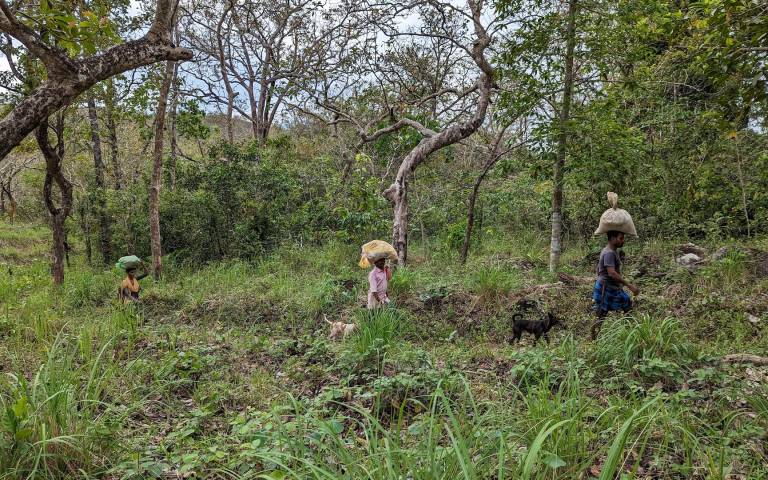 Research
Research

Subject
Ecological and Place-Sensibilities in the Forest Villages of a Monsoon Biome, The Western Ghats Mountains, India
First and second supervisors
Abstract
Divya’s research explores how an earlier peripatetic indigenous community brings an expansive and generational understanding of their mountain-monsoon-forest landscape to their present-day, more sedentary lives, rituals and spatial practices in villages.
Indigenous landscapes and their natural and cultural ecologies are often understood and represented through dominant and colonial knowledge systems. Divya's research challenges this by reframing such environments as holistic cultural-ecological 'biomes'. She looks at the forest villages of an adivasi (original-inhabitants) community: the Kanikkarans of the Agasthyamalai ranges of the Western Ghats mountains and monsoonal (seasonal rainfall) system in India.
Kanikkarans were earlier more peripatetic, enfolding interactions with diverse monsoon-biome worlds. They crossed multiple cultural-ecological thresholds and formed intricate webs of relationships across spaces, places, species, and time, till they were settled into villages by the Indian government in the 1970s through a colonial-era (1920s) forest act, transitioning into a sedentary community.
The study explores how Kanikkarans bring their fluid, circulatory and generational knowledge to their situated lifeworlds, sensibilities, and spatial practices in their local villages and places. It attempts to understand, record and evolve alternative forms of representation of the Kanikkaran's (and more generally indigenous people's) imagination of their wider universe, where forests, monsoons and mountains are key mediators.
Transdisciplinary and drawing out 'emic' lived experiences and lifeworlds, Divya's study will rely on landscape (including rurality) studies, architectural/ spatial histories, and anthropology (folklore, music, ritual studies).The methods include ethnography, drawings, and field surveys retracing on foot Kanikkaran's trajectories within the Ghats.
Biography
Divya Shah is an academician and a researcher in landscape studies,spatial histories and ethnography, interested in landscape and its reciprocity to cultural narratives of Indian rural places. She is currently undertaking a PhD at the Bartlett School of Architecture, UCL.
In the last twelve years, she has developed and taught at the CEPT University, India - two unique research cum process-based landscape design studios that advanced her explorations of Indian jungles and forest villages. She was part of an expert study team on forest villages of the Khasi people in Meghalaya in northwestern India (known for its living root bridges). Her recent travel-based winter school at the landscape program CEPT documented folklore and myths of sacred groves of the Western Ghats.
She has presented her teaching and research work at international conferences, including the European Council of Landscape Architecture Schools, Asian Cultural Landscape Association, UNESCO-Unitwin, ICOMOS, International Federation of Landscape Architects and ISVS-10, International Seminar on Vernacular Settlements.
Funding
- Divya’s PhD is funded by The London Arts & Humanities Partnership and supported by UCL’s Doctoral school funding.
Image:
A snippet from the everyday lives of Kanikkarans,adivasis (indigenous people/ original inhabitants) of Southern Western Ghats. Kanikkarans moving across 25 odd kilometres of steep hills, dense rain forest and wild elephant territory, lugging produce on their heads from their forest villages to sell it at a local market.
Location: Pattampara, Athirumalai forests, Southern Western Ghats, India
Image credit: Siddarth Jain
 Close
Close

